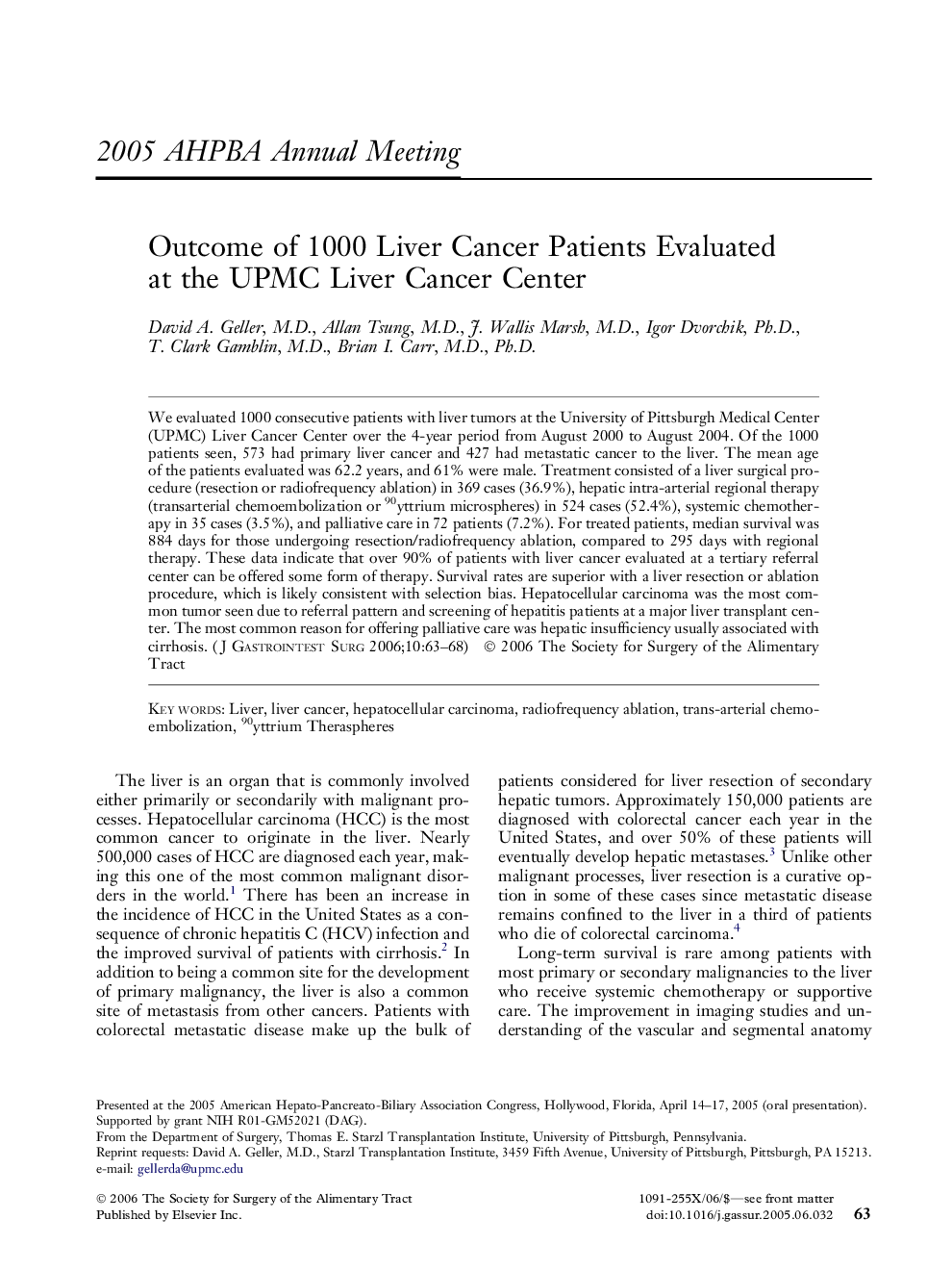| Article ID | Journal | Published Year | Pages | File Type |
|---|---|---|---|---|
| 4297258 | Journal of Gastrointestinal Surgery | 2006 | 6 Pages |
Abstract
We evaluated 1000 consecutive patients with liver tumors at the University of Pittsburgh Medical Center (UPMC) Liver Cancer Center over the 4-year period from August 2000 to August 2004. Of the 1000 patients seen, 573 had primary liver cancer and 427 had metastatic cancer to the liver. The mean age of the patients evaluated was 62.2 years, and 61% were male. Treatment consisted of a liver surgical procedure (resection or radiofrequency ablation) in 369 cases (36.9%), hepatic intra-arterial regional therapy (transarterial chemoembolization or 90yttrium microspheres) in 524 cases (52.4%), systemic chemotherapy in 35 cases (3.5%), and palliative care in 72 patients (7.2%). For treated patients, median survival was 884 days for those undergoing resection/radiofrequency ablation, compared to 295 days with regional therapy. These data indicate that over 90% of patients with liver cancer evaluated at a tertiary referral center can be offered some form of therapy. Survival rates are superior with a liver resection or ablation procedure, which is likely consistent with selection bias. Hepatocellular carcinoma was the most common tumor seen due to referral pattern and screening of hepatitis patients at a major liver transplant center. The most common reason for offering palliative care was hepatic insufficiency usually associated with cirrhosis.
Keywords
Related Topics
Health Sciences
Medicine and Dentistry
Surgery
Authors
David A. M.D., Allan M.D., J. Wallis M.D., Igor Ph.D., T. Clark M.D., Brian I. M.D., Ph.D.,
